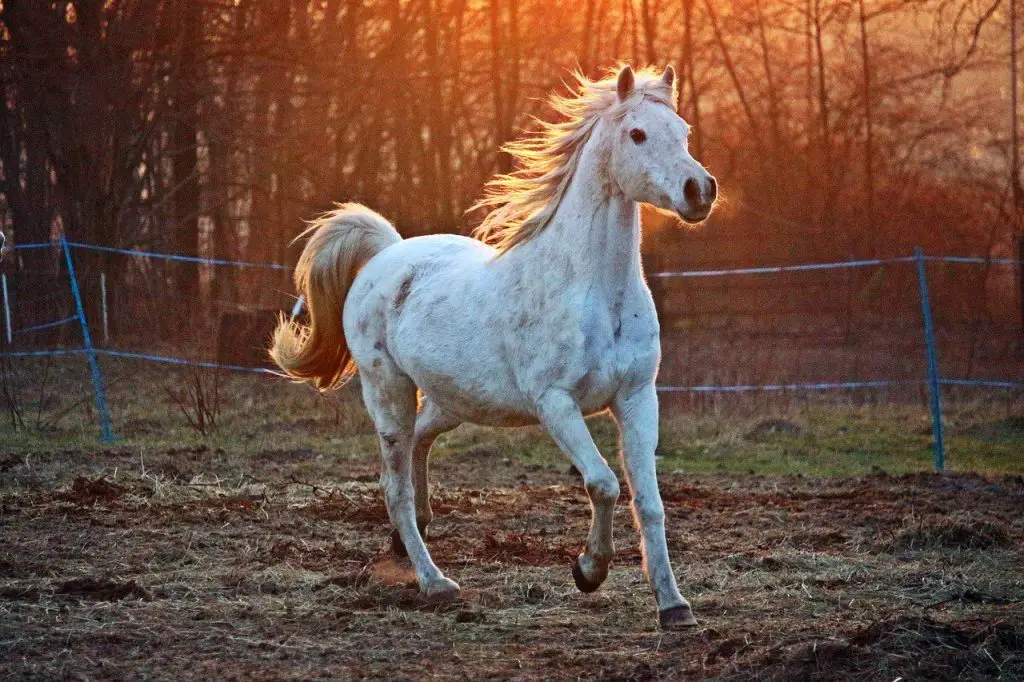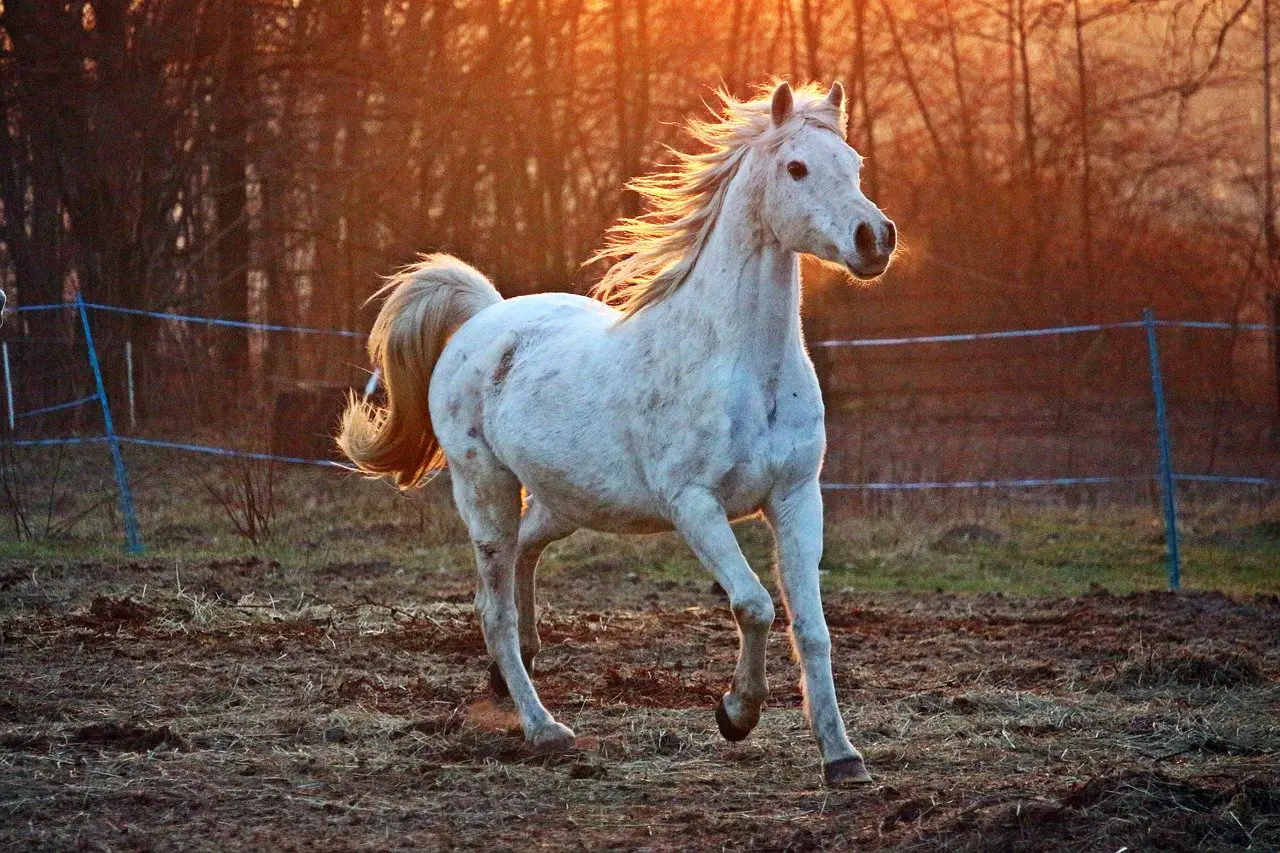Last Updated on February 21, 2022 by Allison Price
Learn how to manage your paddock so your horse, pasture, and soil are healthy.
What’s pasture management?
Pasture management (or grassland management) is the art of growing healthy grasses and related plants year round to provide forage. It also encourages ecological health. This can help preserve or improve native grasses and also improve the soil’s health.

Why is it important to manage our pastures?
Good pasture management can have many benefits. It provides a safe area for horses to exercise and show natural behaviors.
Active management of your pasture will allow you to grow the grass you desire. Although the grass in your paddock might not be suitable for horses, you can encourage more horse-friendly varieties by monitoring it.
Good pasture management can reduce feed costs and improve biodiversity. It also helps to reduce the environmental impact because grassland is a huge carbon trap. A healthy grassland is more resistant to desiccation and poaching.
How do we manage our pastures?
Soil analysis is a great place to begin with pasture management. It will assess the fertility and health of your soil. It will give you the pH level of your soil, which should be between 6 and 6.5. This is important as grass can’t thrive on acidic soil. Lime can be applied to your fields if your soil is too acidic. Acidic soil is the best for weed growth. Therefore, pH testing can be done every three years and then lime application in the fall.
Flooding can cause soil to lose essential nutrients. It’s important to monitor your soil health, particularly if you live in an area that experiences a lot rain/flooding. Fertilizers can be needed if your soil is not growing well. Most fertilisers contain a mixture of nitrogen, phosphorous and potassium. These nutrients are essential for plant growth and performance. You can add sulphur to any NPK fertiliser to increase yield and fertility.
Manure, seaweed and slurry are natural fertilisers that add nitrogen to the soil. These fertilisers will supply essential nutrients as well as humus, which will improve the soil’s structure.
You should ensure that your fertiliser is well-rotted for at least one year before you spread any dirty bedding, such as shavings or woodchips, on your fields. Applying too much of it “freshly” can take the nitrogen out of soil and cause grass to die. Worm eggs may also be spread around the pasture.
Horse pastures are often considered a problem because fertilizing is associated with fertilising too high in nitrogen. However, this will not prevent horses from growing fast. Potassium and phosphate are vital for healthy root growth. This is what will help your paddock withstand both dry and wet conditions.
It is believed that horses who are overweight or prone to laminitis may be happier in heavily-grazed “starvation pads”. However, these can cause more harm than good for both horses and pasture. Do not crash diet your horse. This can cause them to become very sick and also make it difficult for you to lose weight. The soil will be more susceptible to erosion and poaching if it has been grazed very tightly, depending on the type of soil and weather conditions.
How can we keep our pastures healthy?
Despite all our best efforts, many owners find their fields looking sad and neglected by spring. You should do general maintenance to help your pasture recover. This includes harrowing, rolling and other chores.
The common sight of a chain harrow pulled behind a quad is the equestrian world. However, you can also hire a contractor to harrow your paddock. Harrowing is a great way to improve the soil and encourage grass growth. It also removes moss, dead grass, and weeds. It can also flatten mole hills, which may help to combat poaching. You should poop-pick the whole field before you begin harrowing, as parasitic larvae could be spread throughout the field.
Contractors may have the equipment to oversee the paddock and harrow it simultaneously. This is a great way for you to introduce more horse-friendly grasses. This is especially helpful if you notice that your paddock has become bare.
Rolling is a good option to follow the harrowing. This will help flatten any poaching and strengthen the soil structure around grass roots. A contactor can help you with this. It is possible that the paddock will not be dry enough to roll with a quad, but a tractor or tractor will.
Topping can increase the quality of the sward and encourage new growth. You could hire a contractor who has the right equipment to do this, but sheep are a great option to machinery and can be used to control weeds. Because they have different worm cycles than horses, their worms won’t affect them. Horses who are selectively grazing will result in rough spots that sheep will eat.
You can spray them off if you need to control the weeds in your paddock. You will need to hire a licensed contractor to spray your paddock. Your horse(s), depending on the chemical, would need to be kept out of the paddock for a certain period.
Topping can be used to control weeds. However, if there is ragwort present you need to ensure that it is removed. Ragwort becomes more digestible once it has dried.
The most cost-effective and efficient method of controlling weeds is to dig small areas of weeds, especially ragwort, by hand. Although it is tedious, the end result is rewarding.
What does poo-picking do for pasture management?
Even if your paddock is small, poo-picking helps keep it palatable and reduces the worm burden for horses that are grazing in the area. Poo-picking should be done at least once a week, and perhaps more frequently. You will find your horses creating latrine areas, which can lead to patches of rough grass or weeds if you don’t poo-pick often.
You’ve put in a lot of effort into poo-picking, unless you have a paddock vacuum/ sweeper. Don’t let that go to waste by making a mess in your field! Tipping poo into the corner of the field can cause grass around the pile to grow more quickly than the rest, making it attractive for horses. However, grazing next to a muck pile will increase your horse’s risk of getting worms.
Stocking Rates
The standard horse stocking rate is one acre per mare, plus one additional acre. Four horses would require four acres, plus one more, to make a total of five acres. The ideal stocking density for your field may vary depending on the land and the breed, size, and age of the horses.
Stocking rates can be affected by the amount of work your horses do. This depends on how many calories they require, shelter availability, and whether or not you have access to stables. Stocking too many horses can result in poor soil quality and grass quality, which can have an adverse effect on their health. It’s important to ensure that you set a stocking rate that is appropriate for your paddock.
What impact do gateways have on pasture management?
High-traffic areas can quickly be purged, and it is possible to become a nuisance by walking around water troughs or through gates. It is worth scraping a semi-circle about three horses’ lengths from the gate or water trough, and placing crushed stone. Although it might seem expensive, this can have huge benefits for your horses and pasture. While it may appear less costly at first, putting woodchip in the gateway can lead to more problems when it starts to fall apart.
It can be very helpful to move the gate to the highest point in your field if it is situated on a slope. It might be worthwhile to assess which part of your field is most resistant to rain and install a gate there. Rotating between the gates can help, as it allows for one area to dry before being used again. Also, ensure that the gate is wide enough to allow a tractor to access the field for maintenance work.


